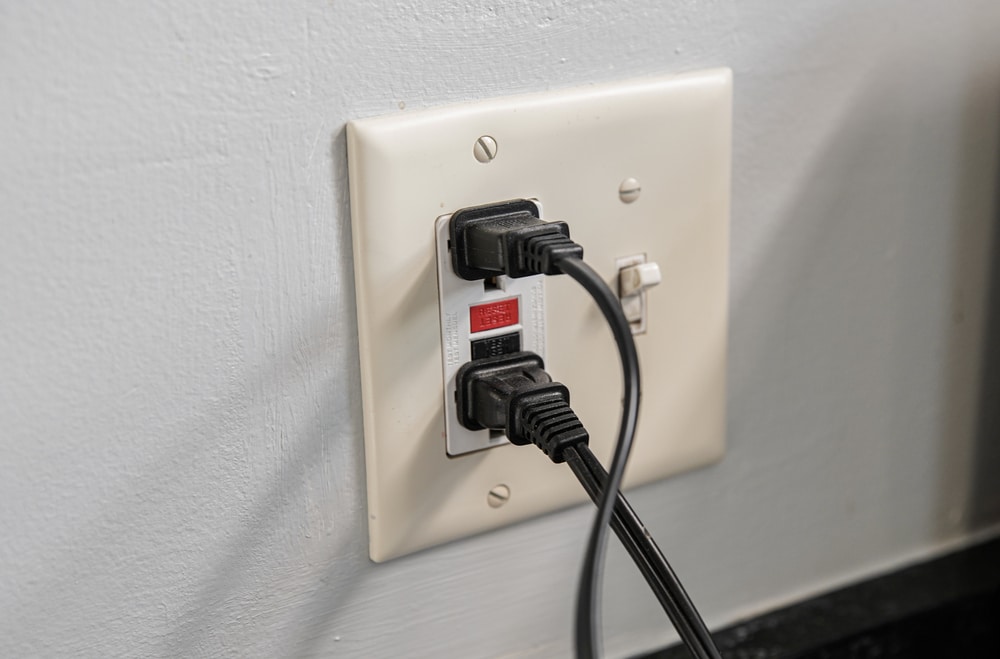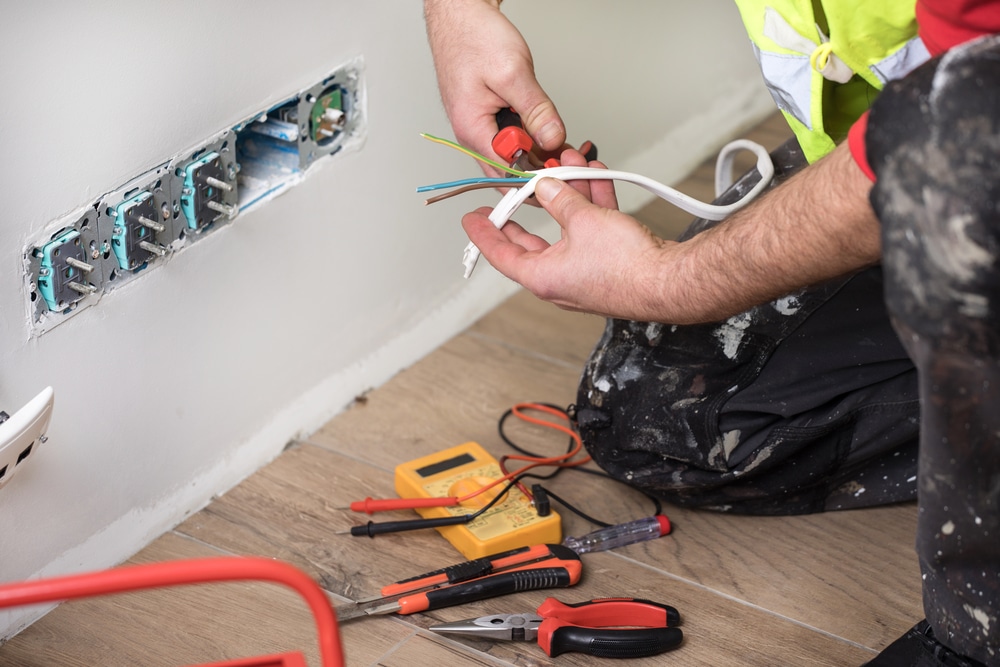Understanding Ground Fault Circuit Interrupters (GFCIs)

If you work with electricity in any capacity, you must understand what ground fault circuit interrupters are and how they work. The National Electrical Code requires the use of these devices to prevent electrical injury, and they are indispensable for maintaining electrical safety in all industries.
When the use of GFCIs is neglected in certain environments, fatal injuries can occur as a result of unmitigated electric shock, so it is imperative to employ these devices in order to protect human life.
Read on to learn what a ground fault circuit interrupter does, when it should be used, and how to determine which type of GFCI best suits a particular situation. You should also check out our training on electrical safety.
What Is a Ground Fault Circuit Interrupter?
A ground fault circuit interrupter, or GFCI, is an electrical device that is designed to protect against harmful electric shocks. They are most commonly found in areas with a high risk of electrocution, such as laundry rooms, kitchens, bathrooms, and anywhere with electricity flowing near water.
These devices may be installed as part of the electrical outlets in a home, or they may serve as a breaker for electrical circuits or even as portable structures for short-term use. Their purpose is to stop an electrical current from coming into contact with a person to prevent electrocution.
GFCI protection is a relatively simple process. When the device is installed and working properly, the GFCI senses unusual changes in electrical current. It is very sensitive, so the GFCI detects when the electrical current flows even just a few milliamps more or less than it should.
When this happens, the GFCI reacts quickly to disable the circuit and stop the current.

Ground Fault Explained
The term “ground fault” refers to the connection between a device that is producing electricity and a material in contact with a grounded surface that can conduct that electricity. It is the nature of an electric current to always try to make its way to the ground by any means necessary.
Part of working with electricity is ensuring that the current only flows to the ground on the route it is supposed to, rather than via an alternative path that could cause injury to a person.
Ground faults offer electric currents a new way to reach their destination, but this path is often dangerous. One of the main ways ground fault occurs is when a person comes into contact with an outlet that is not GFCI-protected and becomes an unintended conductor, risking electrocution.
The use of GFCI’s is such an important topic that the U.S. Consumer Protection Agency has even weighed in on the subject.
What Are the 3 Types of GFCI?
GFCIs are not all the same, so it’s important to choose the right kind for your unique situation. There are three main types of GFCIs, and while they all serve to redirect a rogue electrical current in a safe manner, they are each intended to be used in their own specific circumstances and should not be interchanged.
Familiarize yourself with each type based on the descriptions below.
GFCI Receptacle
A GFCI receptacle, also known as a GFCI outlet, is a common form of GFCI. This is an electrical outlet that has GFCI protection built into it. They have the same plug-in configuration as regular outlets, but you will be able to see the test button as well as the reset button on the outlet plate.
GFCI outlets are commonly found on exterior and bathroom receptacles, near washing machines, on receptacles serving kitchen countertops, and anywhere where water might easily come into contact with electronic devices.
Outdoor outlets should always be weather-resistant GFCI outlets due to their exposure to rain and moisture.
Circuit Breaker GFCI
Instead of installing a GFCI outlet in every necessary location, some buildings are equipped with a GFCI circuit breaker. These protected circuit conductors provide the same service to every outlet on the circuit.
Ideally, this circuit will have access to all bathroom outlets, receptacles located in utility rooms, or anywhere else a traditional GFCI-protected receptacle would be necessary.
Temporary GFCI
Construction sites will sometimes employ these portable circuit interrupters to protect workers who need to use power tools on the job. These are particularly necessary in outdoor environments where the elements cannot be controlled.
While these devices are very useful, they should never be used as permanent fixtures. Also, you should pay special attention when using extension cords regarding electrical hazards.

Guidelines to Remember for Using Ground Fault Circuit Interrupters
What are the rules for GFCI outlets? Now that you understand how GFCI outlets and circuit breakers work, it’s time to learn how to use them safely and effectively.
Each type of GFCI has its own specific rules for safe usage, so it’s important to have a comprehensive understanding of these so that you don’t make a dangerous mistake. Misuse of GFCI devices can have grave consequences. Also, it’s helpful if you teach your employees about common electrical hazards and how to avoid them.
Proper GFCI Outlet Use
Use a GFCI outlet any time you use devices or appliances that are not already equipped with built-in protection, especially in areas where they are likely to come into contact with water. Avoid using outlets that are not working properly.
Always Test Your GFCIs
A new GFCI outlet should always be tested prior to use, and existing outlets should be tested at least once a month.
In order to test the receptacle, press the clearly labeled test button. This will cause the reset button to pop out, indicating that the internal switch has shut off the outlet. Hit the reset button again to return to normal function.
Know When to Use a Temporary GFCI
Temporary or portable interrupters should be used outdoors with electronic equipment, such as using power tools on a construction site. Never use these devices as permanent fixtures. They are only intended for short-term use.

GFIs Versus GFCIs
When performing your own research on GFCIs, you may come across the term “GFI” in your readings and be somewhat confused. What is the difference between GFIs and GFCIs?
Simply put, there is no difference. GFIs, or “ground fault interrupters,” are the same as GFCIs under a slightly different name. Professional electricians use These terms interchangeably; however, the term “GFCI” is somewhat more common.
GFCIs Versus AFCIs
AFCIs, or arc fault circuit interrupters, are an entirely different kind of safety device. These are used to prevent fires, while ground fault circuit interrupters are intended to reduce the risk of electrocution.
If you’re concerned with faulty wiring causing a fire hazard, you’ll want to employ an AFCI. However, these types of interrupters won’t help prevent electric shock.
Where Are Ground Fault Circuit Interrupters Necessary?
The most important places to have these circuit interrupters installed are areas that contain electronic appliances, water sources, or excessive moisture. Bathrooms, kitchens, and unfinished basements are prime candidates for GFCI installation.
When power tools are used in outdoor spaces, a portable interrupter should be used to protect against rain interference.

Nuisance Tripping: What Should Not Be Plugged Into a GFCI Outlet?
Electrical devices typically contain hot and neutral wires. The neutral wire discards unused energy, while the hot one transfers energy to its goal.
Nuisance tripping occurs when a small amount of the electric current leaks from the hot wire inside to the ground. Avoid this by keeping GFCI circuits short and not using them with fluorescent lights or electric motors.
Make Electrical Safety Your First Priority
An electrical shock that occurs without the proper protective measures in place can lead to serious injury and even death, so maintaining safe practices with your electrical system is non-negotiable.
Make sure to always use the right kind of GFCI for each specific environment to protect yourself and others from electricity surges.
If you’re not confident working with electricity or lack a basic knowledge of electrical terms, please rely on the assistance of a qualified electrician.